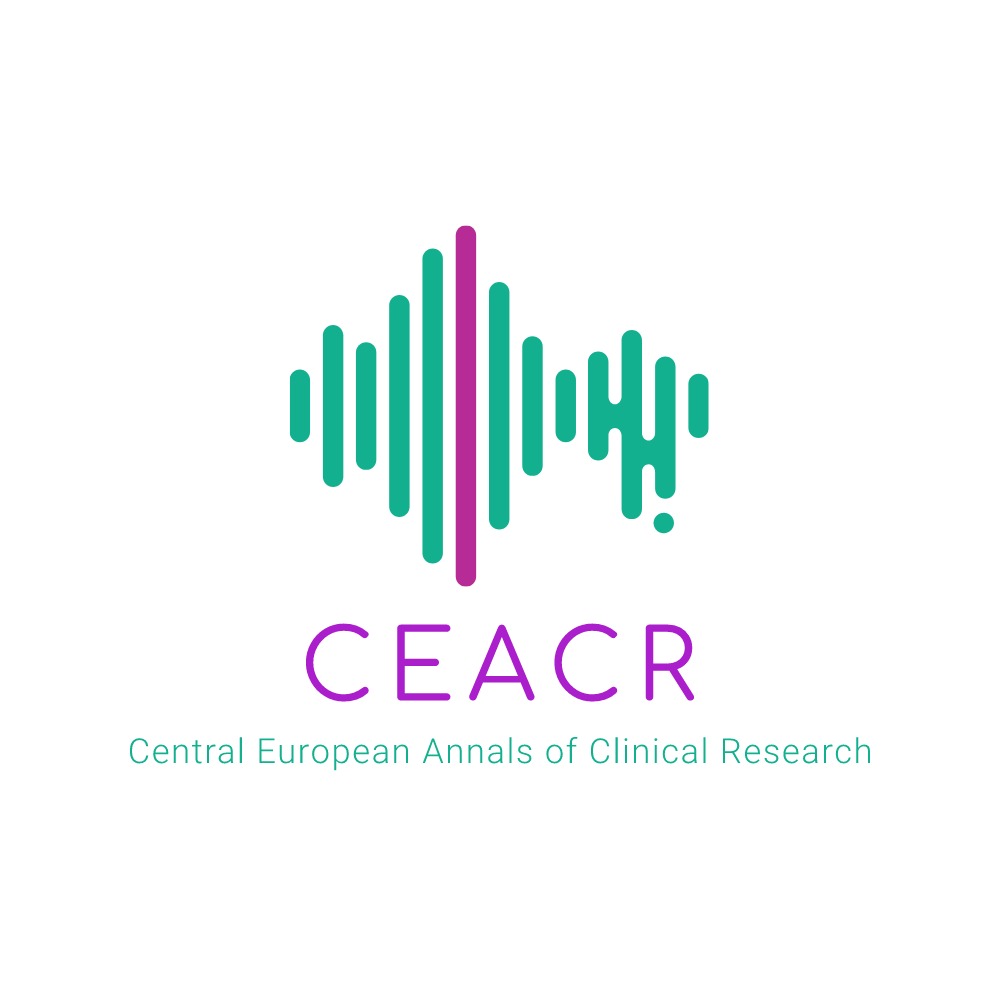Cent_Eur_Ann_Clin_Res 2020, 2(1), 52; doi:10.35995/ceacr2010052
Endoped Abstract
Polyuria-Polydipsia—First Sign of a Rare Hematological Disease
1
Department of Endocrinology, Ploiesti Pediatric Hospital, 100336 Ploiesti, Romania
2
Department of Endocrinology, Diabetes and Metabolic Disorders, Elias University Hospital, 011461 Bucharest, Romania; luminita.cima@gmail.com (L.C.); simonafica55@gmail.com (S.F.)
3
Department of Endocrnology II, Carol Davila University of Medicine and Pharmacy, 020021 Bucharest, Romania
4
Department of Pediatric Oncology, Department of Pediatric, Marie Curie Emergency Children Hospital, 077120 Bucharest, Romania; sfrijan.doinita@gmail.com
5
Department of Neurosurgery, Department of Pediatric, Marie Curie Emergency Children Hospital, 077120 Bucharest, Romania; starnoveanu@yahoo.com
6
Department of Patology, Department of Pediatric, Marie Curie Emergency Children Hospital, 077120 Bucharest, Romania; flavia.ultimescu@gmail.com
7
Department of Pediatric II, Fundeni Clinical Insitute, 022328 Bucharest, Romania; ancacolita@yahoo.com
*
Corresponding author: dr.vasilachesimona@yahoo.com
How to cite: Vasilache, S.L.; Cima, L.; Fica, S.; Sfrijan, D.; Sorin, T.; Ultimescu, F.; Coliţă, A. Polyuria-Polydipsia—First Sign of a Rare Hematological Disease. Cent. Eur. Ann. Clin. Res. 2020, 2(1), 52; doi:10.35995/ceacr2010052.
Received: 26 October 2020 / Accepted: 14 November 2020 / Published: 17 November 2020
Keywords:
Langerhans cell histiocytosis; children; diabetes insipidusIntroduction
Central diabetes insipidus (CDI) is a rare symptom in children [1]. The aetiology of CDI in childhood is heterogeneous. Most of the causes are idiopathic, while others can be heralded by rare disorders that infiltrate the pituitary stalk such as lymphocytic hypophysitis, germinoma, sarcoidosis or Langerhans cell histiocytosis (LCH) [2,3].
Case Presentation
We report a 12-year-old girl who presented in the Endocrinology Department for weight gain in the last 3 years and menstrual irregularities. From family history, we learned that the mother was diagnosed with Graves’ disease and brother had hipothyroidism. On endocrine examination, she had abdominal obesity, goiter, polyuria (diuresis 10 L/24 h) and polydipsia (ingested liquids 10 L/24 h). The laboratory assessment revealed high cholesterol level, urinary density < 1005, autoimmune tiroiditis with euthyroid status, with no hormonal deficiencies. The fluid deprivation-vasopressin test demonstrated central diabetes insipidus (CDI) and desmopressin treatment was initiated. Imaging examination showed a pituitary microadenoma and thickening of the pituitary stalk. Thus, lymphocytic hypophysitis, sarcoidosis and granulation tissue lesions were considered in the differential diagnosis. The diagnosis of LCH was suspected by bone X-ray showing multiple lytic bone lesions in the left femoral bone and skull. The disease was further confirmed by pathology of the biopsy specimen from the skull lesion. The cytostatic treatment was initiated, and after six doses, the 18F FDG PET CT revealed two lytic lesions in both femural bones, and the cytostatic treatment continued to date.
Conclusions
Funding
This research received no external funding.
Conflicts of Interest
The authors declare no conflict of interest.
References
- Andrés, B.C.; Calvo, M.T.M. Thickening of the pituitary stalk in children and adolescents with central diabetes insipidus: Causes and consequences. An. Pediatr. 2019, 90, 293–300. [Google Scholar]
- Zhou, W.; Rao, J. Isolated Langerhans cell histiocytosis in the hypothalamic-pituitary region: a case report. BMC Endocr. Disord. 2019, 19, 143. [Google Scholar] [CrossRef] [PubMed]
- Miao, C.; Zhang, L. Pituitary gland and bone involvement of Langerhans cell histiocytosis in a boy and brief review of the literature. Hell. J. Nucl. Med. 2018, 21, 148–150. [Google Scholar] [PubMed]
- Papadopoulou, M.; Panagopoulou, P. The multiple faces of Langerhans cell histiocytosis in childhood: A gentle reminder. Mol. Clin. Oncol. 2018, 8, 489–492. [Google Scholar] [CrossRef] [PubMed]
- Jezierska, M.; Stefanowicz, J. Langerhans cell histiocytosis in children—A disease with many faces. Recent advances in pathogenesis, diagnostic examinations and treatment. Postepy Dermatol. Alergol. 2018, 35, 6–17. [Google Scholar] [PubMed]
© 2020 Copyright by the authors. Licensed as an open access article using a CC BY 4.0 license.
